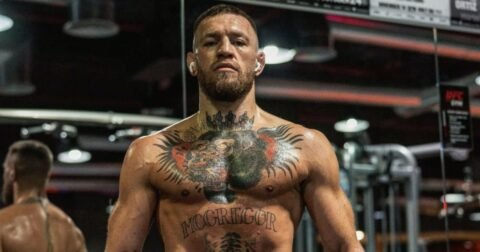Paddy Pimblett, the rising star in the UFC Lightweight division, has faced persistent scrutiny over his weight management. Despite never missing the crucial 155-pound mark, knowledge of his past struggles, including dangerous weight cuts that almost led to kidney failure, raises concerns among fans about his long-term health. His journey from a title holder at Featherweight to a dominant 7-0 Lightweight contender reveals the importance of prioritising fighter safety over drastic weight fluctuations, making it a critical topic for the MMA community.
The Weight Debate: An Ongoing Concern for Paddy Pimblett
Paddy Pimblett’s weight management is a hot topic within the mixed martial arts community, as fans and analysts alike express their concerns over his fluctuating physique. Despite weighing in at a consistent 155 pounds on fight day, Pimblett has earned a reputation as a notably large Lightweight. This concern stems not only from the physical effects of weight cutting but also from the feasting habits he often displays post-fight, leading to considerable weight gain between bouts. Observers worry that such drastic changes could potentially compromise his health and shorten the longevity of his career.
The phenomenon of fighters dealing with rapid weight variations is not uncommon in MMA, but Pimblett’s case is particularly striking due to the extent of his weight gains. After each match, he is frequently seen indulging in large quantities of high-calorie food. This extreme approach raises eyebrows, especially considering the intense training and weight-cutting schedules fighters undertake to reach their competitive weight. As fans voice their concerns, promoters and health professionals alike are starting to emphasise the importance of maintaining a healthier lifestyle both inside and outside of the octagon.
From Featherweight to Lightweight: A Difficult Transition
Before his successful move to the Lightweight division, Pimblett faced significant challenges while competing at Featherweight. He originally fought at 145 pounds, where he captured the Cage Warriors Featherweight title, but the weight cuts became increasingly arduous as his body matured and developed more muscle mass. This transformation made the process of shedding weight not only uncomfortable but potentially hazardous, culminating in a fight against Nad Narimani where Pimblett’s health took centre stage.
Reflecting on those past experiences, Pimblett revealed, “That cut was disgusting. I was just one pound away from kidney failure and had some issues with my liver.” Such alarming statistics serve as a reminder of the dangers that accompany extreme weight cutting, particularly in combat sports. Pimblett’s candid acknowledgement of these near-fatal conditions sheds light on a broader issue in the MMA community, where dangerous weight cuts can lead to severe health consequences.
The Consequences of Excessive Weight Cutting in MMA
Pimblett’s battle with weight cutting isn’t just an isolated incident—it resonates deeply within the sport itself, as other fighters have encountered similar perilous situations. The risks associated with extreme weight cuts are well-documented, with high-profile cases like Daniel Cormier’s kidney failure during his Olympic weight cut in 2008. Tragically, several MMA athletes have even lost their lives as a result of unhealthy weight management practices, heightening the urgency to address this pressing issue.
Given these grave implications, fighters and promoters must take proactive measures in ensuring athletes prioritise their health above all. Pimblett’s own experiences have inspired discussions around reforming weight-cutting practices, with many advocating for policies that encourage safer weight management and improved health education among fighters.
A Lesson Learned: Sharing His Story for Awareness
Despite the rocky history of weight cutting, there is a silver lining to Pimblett’s story. His medical issues from 2017 have since become teaching tools at the UFC Performance Institute. Pimblett revealed, “I only found out recently that the DEXA scan is used in the PI to teach people how not to cut weight. I’m the example of how not to cut weight!” His journey serves as both a cautionary tale and a valuable learning opportunity for athletes aspiring to enter the sport.
This newfound role as an educational tool underscores the importance of informed decisions regarding weight management. By sharing his struggles, Pimblett aims to bring awareness not only to the adverse effects of weight cutting but also to the necessity for safer methods within the industry. It’s a step toward preventing future athletes from facing similar life-threatening situations, ultimately fostering a culture that prioritises health over the unyielding pursuit of victory.
Pimblett at Lightweight: A More Manageable Journey
Transitioning to Lightweight has allowed Pimblett to manage his weight cut more effectively, with fewer drastic fluctuations than in his Featherweight days. His approach reflects a balanced regimen that supports both his performance and overall health, demonstrating a commitment to avoiding the mistakes of his past. Consequently, this adjustment has not hindered his success; Pimblett currently boasts an impressive 7-0 record inside the octagon, indicative of his ability to thrive in the lightweight division.
Most recently, his dominating performance against Michael Chandler has placed Pimblett firmly in title contention, showcasing that a healthier weight cut does not compromise his competitive edge. As he continues to evolve as a fighter, fans are hopeful that he can strike a balance between achieving weight goals and sustaining a successful career in the UFC, all while inspiring others to take their health seriously.
| Key Point | Details |
| Paddy Pimblett’s Weight | Always makes the 155-pound limit but has significant post-fight weight fluctuations. |
| Past Health Issues | Experienced near kidney failure and liver issues during Featherweight cuts. |
| Current Division | Competes in the UFC Lightweight division. |
| Lightweight Record | Boasts an impressive 7-0 record. |
| Educational Role | His DEXA scan is used at the UFC Performance Institute as an example of how not to cut weight. |
| Fighter Safety Focus | Highlights the importance of prioritising health and safer weight management practices. |
Paddy Pimblett’s journey through weight management highlights the significant health risks associated with extreme weight cutting in MMA. While his move to Lightweight has improved his situation, the scrutiny he faces reflects broader concerns for fighters’ health. How will the sport evolve to prioritise fighter safety in weight management?
Frequently Asked Questions
What weight class does Paddy Pimblett compete in?
Paddy Pimblett competes in the Lightweight division of the UFC, which has a weight limit of 155 pounds.
Has Paddy Pimblett ever missed weight during his fights?
No, Paddy Pimblett has never missed the 155-pound mark for his Lightweight fights, showcasing his ability to manage his weight effectively within this class.
What are the health risks associated with extreme weight cutting in MMA?
Extreme weight cutting can lead to serious health issues, such as kidney and liver damage. Fighters like Daniel Cormier have faced life-threatening situations, highlighting the dangers of unsafe weight management practices.
How has Paddy Pimblett’s weight cut changed since moving to Lightweight?
Since transitioning to Lightweight, Pimblett’s weight cut has become more manageable compared to his previous struggles at Featherweight, allowing him to maintain his performance levels with less drastic fluctuations.
What lesson does Paddy Pimblett’s experience provide to other fighters regarding weight cutting?
Pimblett’s experience demonstrates the dangers of extreme weight cutting, and his medical history is now used as a cautionary example at the UFC Performance Institute to educate fighters on safer practices.







